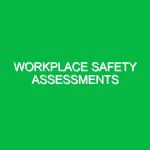Understanding Comprehensive Safety Training Programs
In today’s rapidly evolving workplace, the importance of Comprehensive Safety Training Programs cannot be overstated. These programs are designed to equip employees with the knowledge and skills necessary to identify, assess, and manage potential health and safety risks in their environment. Whether in construction, manufacturing, healthcare, or any other industry, a well-structured training program serves as the backbone of effective health, safety, and environment (HSE) management.
Comprehensive Safety Training Programs address various aspects of workplace safety, including accident prevention, emergency response, and regulatory compliance. They are not merely a checklist of procedures but rather an integrated approach to fostering a culture of safety. When implemented effectively, these programs can significantly reduce incidents, enhance employee morale, and improve overall productivity.
Identifying Hazards and Risks
The first step in any Comprehensive Safety Training Program is identifying potential hazards and risks. Hazards can be categorized into several types:
Physical Hazards
Physical hazards include anything from machinery, noise, and temperature extremes to slips, trips, and falls. For instance, construction sites are notorious for such risks. A personal anecdote that highlights this involved a colleague who suffered a fall from an unguarded scaffold—an incident that could have been prevented with proper training and safety protocols.
Chemical Hazards
Chemical hazards involve exposure to harmful substances. Employees in laboratories or factories must understand material safety data sheets (MSDS), which provide critical information about handling chemicals safely. For example, improper handling of hazardous materials can lead to severe health complications or environmental contamination.
Biological Hazards
Biological hazards encompass exposure to harmful microorganisms. This is especially relevant in healthcare settings, where professionals may encounter bloodborne pathogens. A Comprehensive Safety Training Program in such environments should include training on infection control and proper use of personal protective equipment (PPE).
Ergonomic Hazards
Ergonomic hazards arise from poorly designed workstations or repetitive motion tasks that can lead to musculoskeletal disorders. An example of this can be seen in office environments where employees may develop chronic back pain due to inadequate seating arrangements. Comprehensive training can help mitigate these risks through ergonomic assessments and proper workstation setup.
Best Practices and Safety Precautions
Implementing a Comprehensive Safety Training Program requires not only identifying hazards but also taking proactive measures to prevent incidents. Here are some essential best practices:
Regular Training and Refresher Courses
Safety training should not be a one-time event. Regular refresher courses are vital to ensure that employees remain vigilant and informed about current safety practices. For instance, a manufacturing plant might conduct monthly safety drills to prepare employees for emergency situations.
Effective Communication
Clear and open communication channels are crucial. Employees should feel comfortable reporting hazards or unsafe conditions without fear of repercussions. Creating an anonymous reporting system can encourage more employees to voice their concerns, leading to a safer workplace.
Use of Personal Protective Equipment (PPE)
Ensuring that employees are equipped with the necessary PPE is non-negotiable. Comprehensive Safety Training Programs should include instruction on the proper use, maintenance, and storage of PPE. This is particularly important in environments where chemical exposure or physical hazards are prevalent.
Emergency Response Planning
Every Comprehensive Safety Training Program should include robust emergency response plans. Employees must know evacuation routes, first aid procedures, and how to operate fire extinguishers. Conducting regular drills can prepare employees for actual emergencies, as was demonstrated in a fire drill I participated in at a previous job, which highlighted the importance of knowing one’s role during an emergency.
Regulations and Standards
Comprehensive Safety Training Programs must align with various regulations and standards governing workplace safety. Some key regulations include:
OSHA Standards
In the United States, the Occupational Safety and Health Administration (OSHA) sets forth regulations that employers must follow to ensure workplace safety. OSHA outlines specific requirements for training, hazard communication, and recordkeeping.
ISO 45001
The International Organization for Standardization (ISO) has developed the ISO 45001 standard, which provides a framework for occupational health and safety management systems. This standard emphasizes continuous improvement in safety performance, making it a valuable resource for organizations seeking to enhance their safety training initiatives.
Local Regulations
In addition to federal standards, local regulations may apply. Employers should be familiar with state and regional laws that pertain to workplace safety, as these can vary significantly.
Creating an Effective Training Program
Developing a Comprehensive Safety Training Program involves several key steps:
Needs Assessment
Begin with a thorough assessment of the workplace to identify specific hazards and training needs. This may involve surveys, interviews, or direct observations. By understanding the unique risks of your environment, you can tailor the training to address those specific needs.
Curriculum Development
Create a curriculum that includes theoretical knowledge and practical skills. Incorporate various training methods, such as workshops, e-learning, and hands-on activities. For example, using simulations can help employees practice their responses to emergencies in a controlled setting.
Evaluation and Feedback
After training sessions, gather feedback from participants to evaluate the effectiveness of the program. Surveys can provide insights into what worked well and what areas need improvement. Continuous evaluation helps refine the training process and ensures that it remains relevant.
Documentation and Recordkeeping
Maintain thorough records of training sessions, attendance, and evaluations. This documentation is essential for compliance with regulations and can serve as proof of the organization’s commitment to safety.
Conclusion
Comprehensive Safety Training Programs are not merely a regulatory requirement; they are a vital investment in the health and safety of employees. By identifying hazards, implementing best practices, and adhering to regulations, organizations can cultivate a culture of safety that benefits everyone involved.
As we’ve seen, the implications of a well-executed training program extend beyond compliance—they create an environment where employees feel valued and empowered to contribute to their safety and that of their colleagues. In the ever-changing landscape of workplace safety, these programs are the cornerstone of effective HSE management.
In the end, the goal is clear: to ensure that every employee returns home safely at the end of each day, equipped with the knowledge and skills needed to navigate their work environment confidently.


